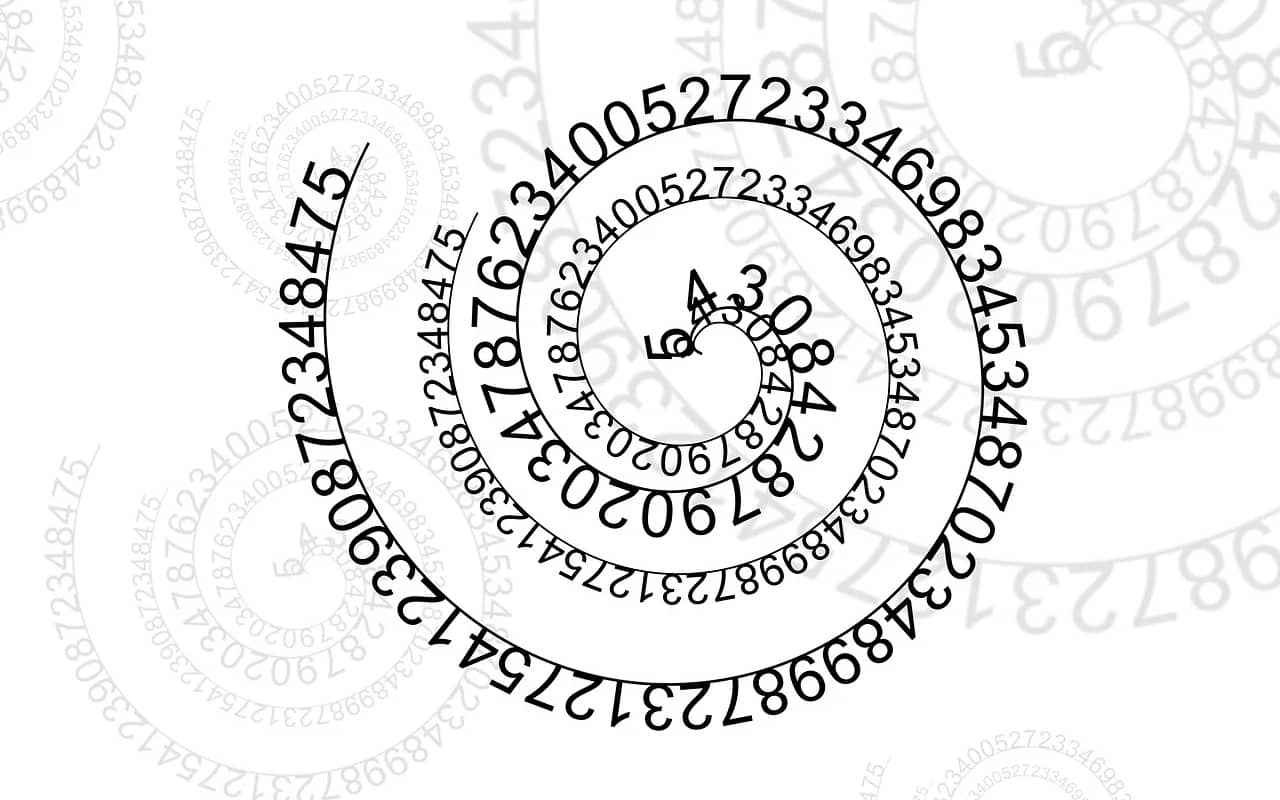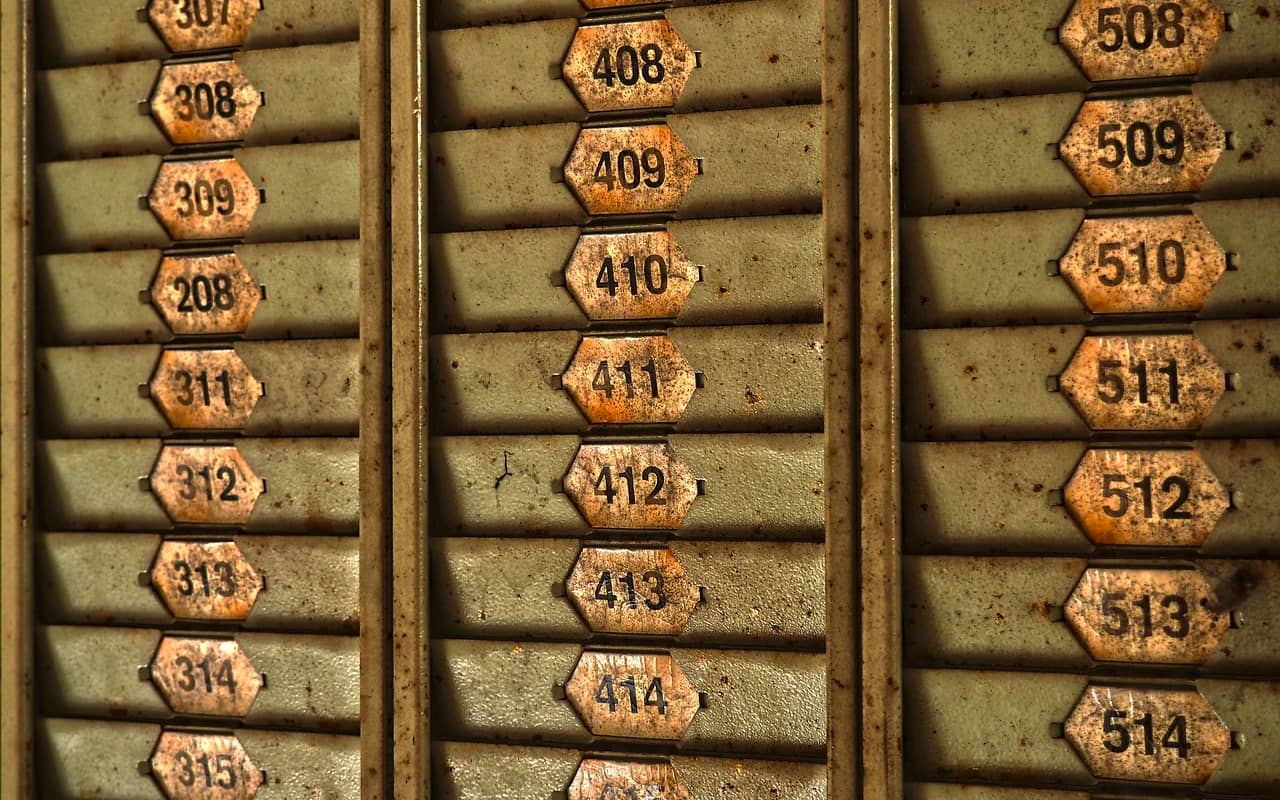Podcast: Download
Subscribe: Apple Podcasts | RSS

That’s true, but this mnemonic tool is actually a lot more powerful than that.
The problem is…
A lot of people don’t know enough about it to understand its raw power.
They also don’t know the different ways you can modify the Person Action Object pattern, or even have multiple versions for different purposes.
And that means they’re missing out on something truly special.
But not you.
You found this page and we’re taking a deep dive into all things PAO.
Are you excited?
Let’s get started!
What Is The PAO System?
PAO memory systems go back a very long time.
It is a simple way to break linking down into individual units that can interact in memorable ways.
Take these numbers, for example:
21 36 90
They’re not that difficult to memorize, but someone using a traditional PAO system would divide the numbers into a set of images specifically ordered according to the PAO pattern. They would imagine something like Jack Nicholson throwing burning matches at a bus.
- Person = Jack Nicholson
- Action = Throwing matches
- Object = Bus
People derive the exact images they use in different ways, and we’ll talk about how to do that in a moment.
Briefly, 21 is Jack Nicholson in my PAO System because I’ve built each image based on the Major System:
- 2 = N
- 1 = D or T
From these rules, I assigned the word “nut.” Since Jack Nicholson often plays characters who are completely insane (or “nuts”) he strikes me as perfect for that number.
But you might be wondering…
How the heck did people come up with such an interesting way to approach memory?
A Brief History of Person Action Object Systems
The notion of combining or linking information you want to remember to a Person Action Object complex begins much more simply.
The first reference I can find is the Katapayadi system. The oldest available evidence is 683 C.E., but it is almost certainly older than that.
In this alphanumeric system, we see what is probably the first detailed basis for transforming numbers into words.
What kinds of words?
- Persons
- Actions
- Objects
Later, you see this arrangement built out with great sophistication in the works of Giordano Bruno, especially On the Shadows of the Ideas.
I’m not entirely sure, but I think Bruno chose to include Hebrew letters in his memory system because of the gematria. In this system, each Hebrew letter is classified so that it also represents a number.
And since almost every Hebrew letter represents an animal, you pretty much have either a person or object in each letter along with the number. This approach is likely also the origin of what used to be called a “bestiary,” and on that Lynne Kelly is really the expert.
The question is…
How does all this work?
Well, changing numbers into associations that do things allows the person using memory techniques to compress much more information into far fewer images.
However, not everyone goes for fewer images. Many people assign three associations for each 2-digit pair. For example:
01 = Peter Sutton suds soap
In this case, 0 =2 and 1 = T, leading me to choose an anthropologist for the person, creating suds as the action and soap as the object.
I’ll show you how to simplify all of this later so you need only one image, but let’s look a bit deeper at some history and technical matters based on the general principles we’ve discussed so far.
PAO System vs Major Method vs Dominic System
Two other systems to know about are the Major Method and the Dominic System.
Dominic O’Brien came up with his variation to compete in memory competitions.
Technically speaking there is no such thing as a Dominic System PAO – at least not to my knowledge. This is because the Dominic System reduces a PAO down to a PA system. It’s been refined down to Persons and Actions.
The Major, much like the katapayadi, lets you create any number of words from numbers. So you can have:
- Person
- Action
- Object
- Emotional state
- Smell
- Flavor
- Favorite snack, etc
It’s much more flexible and I strongly recommend using the Major so that you can come up with many more words for your PAO list.
There are other systems you can explore, such as the Ben System and the Shadow.
(For more on the Shadow, check out my conversations with Braden Adams.)

How To Use The PAO System
There are many ways to use a PAO system. You can use it to:
- Memorize numbers
- Memorize tones in tonal languages like Chinese
- Memorize difficult names and vocabulary when you can’t figure out more direct associations
- Number your Memory Palaces so they always have pre-built associations at each station
- Memorize playing cards
- Know the verse numbers when memorizing scripture
- Perform a stunt by memorizing and reciting Pi
- Benefit from incredible brain exercise
One way that people use the PAO system for numbers is very formal. They will always approach numbers in 3 sets of 2 pairs and then use their person action object in order.
That means that if you have a sequence of numbers like 89 43 21:
- 89 will be encoded as the person
- 43 will be encoded as the action
- 21 will be encoded as the object
Using my system, the images here would be:
A viper (Cobra Commander) rams a nun (or Jack Nicholson).
Then, when memorizing the next set of digits, I can have the final object interact with the next set.

In other words, if the sequence is 89 43 21 55, the object that represents 21 can be doing something to the image for 55.
In this way, you can either have short vignettes or much longer narrative sequences.
Getting Started
The first step is to choose how you’re going to approach PAO memory systems so that success is guaranteed.
Again, for most people, I suggest learning the Major System. It helps reduce the arbitrariness of the associations in a way that other systems do not.
But you’re also free to simply assign people, objects and actions to numbers without any special reason. If you have synesthesia, you might have some deeply intuitive choices that come to mind based on that aspect of how your mind words.
Assuming you’re like most of us and you go with the Major, realize that the limited number of words you can choose from is actually a good thing.
A lot of memory systems work so well because limits are productive, not restrictive. They just don’t always seem that way at first glance.
It might also be helpful to realize that a PAO list is really just a variation on the pegword method. I’ve shared the basis for my entire list there if you want to take a look.
Or you can look up various number dictionaries for ideas. Bruno Furst created a really interesting one.
But should you really look the words up?
For ideas, sure.
But the results will really start to flow when you personalize each and every assignment you make for a full 00-99 PAO.
Examples From My “Magnetic” PAO
For many years I got along just fine with just the Major System.
But then I competed with Dave Farrow and realized how slow I was using the Major to memorize cards.
Later, Florian Delle made me realize that you can actually “compress” each assignment in a way that lets make each one a Person that is both an action and an object.
For example, my 84 used to be “fire.”
But after speaking with him, I upgraded it to a character in a movie who uses a blowtorch. Fire because a person who uses an object to burn things.
To repeat: The person is the object that takes an action.
This made everything so much faster!
Another example:
36 used to be a box of matches for me, based on the Major System.
It’s still “match,” but now it’s Mike Tyson in a boxing match. Tyson is the person, boxing is the action and his gloves are the object.
In this way, when I want to memorize a number like 8436, I just have to imagine the blowtorch character from Missing in Action 2 setting Mike Tyson on fire.
This works the same way when memorizing playing cards that have been assigned numbers or memorizing Chinese tones or verse numbers in scripture.
And the best part?
If you take a moment to number your stations in a Memory Palace, you instantly have an image to interact with in each and every memory space you use.
I don’t use that approach particularly often, but it has come in handy many times as an organizational tool.
Using The PAO System For Memorizing Historical Dates
It’s useful to know when certain things happened. Personally, I like to know when philosophers lived so I can understand the development or overlap of certain philosophical questions across time.
Spinoza lived from 1632 to 1677. Using my images, that would be Johnny Cash (the man in black) and Mr. Koch, who was my grade seven teacher.
I placed Spinoza in a Memory Palace after Giordano Bruno who is thought to have been born in 1548 and who died in 1600. This means that I don’t need an image to place Spinoza in the 1600s. But if I did, I would use Dashiell Hammett doing dishes for 16.
The key thing here is to involve the philosophical figure in the images somehow. Usually, I place the birth date in the left hand of the figure and the date of death in the right hand. I adopted this idea from Bruno’s ancient memory strategy of using the body as a Memory Palace.
A Fun Way To Practice A PAO
Here’s an exercise from the Magnetic Memory Method Masterclass:
Once you have all your figures worked out, get some index cards. Starting with 00-99, fill them all out with a 2-digit pair on each card.
Then, shuffle them up.
If you come across a 42, name out the figure you chose. Or if it’s 72, call out that figure.
Once you’re able to name each of your associations for 00-99 relatively quickly, you can then start shuffling the deck and practicing memorizing the numbers that come out in order.
I would suggest starting small, such as with three, two-digit pairs. As you develop your memory for larger and larger sequences of numbers, place the associations in a Memory Palace so you have a point of reference. Having a place to store your associations gives you the ability to think back and work out what your numbers were with much greater ease than if you only think about the images in the void of your mind.
Make The PAO System Your Own
At the end of the day, developing your own PAO System is a highly personal journey.
Although it will undoubtedly share similarities with others, it will still work best when it’s unique to you.
For example, both Ron White and I share William Shatner as an image. But the exact way we use the association differs.
It’s the Major System that causes us to land at the same choice, but after that, you can refer to any particular Star Trek episode or movie, and even several of them, depending on what you’re memorizing.
Again, a rigid PAO approach strikes me as unlimited. I like it to be flexible and give me more options.
Explore The PAO System For Language Learning
When I’ve struggled to come up with associations when learning a language, I always stop. I ask myself what the numbers would be for the word I’m struggling with.
For example, there’s a word in German: faseln. It means to “spout off.”
When I looked at the F and S, I thought of 80. That is an image of… you guessed it:
William Shatner as James T. Kirk with his phaser set to stun. “Eln” would be 52, which is a lion in my PAO system.

But not just any lion. It’s the MGM lion so that the image is vibrant and familiar, not generic.
And imagining Captain Kirk using a phaser on the MGM lion because the lion was “spouting off” a bunch of drivel made it fast, fun and easy to memorize the sound and meaning of that word.
It’s the personalization that makes it work, and the science of active recall shows us the how and why.
So what do you say?
Are you ready to develop one of the most powerful memory systems available to you?
Make it happen!
Related Posts
- Long-Term Memory Loss: 5 POWERFUL Prevention Tips
What is long-term memory loss? What are its causes, symptoms, and how do you prevent…
- The Most Controversial Language Learning Technique In The World
In this episode of the Magnetic Memory Method Podcast ... controversy about using mnemonics in…
- Long-Term Memory Loss: 5 POWERFUL Prevention Tips
What is long-term memory loss? What are its causes, symptoms, and how do you prevent…









16 Responses
I’m currently trying to make my pao now (started since on Monday) and I’m doing it based on the major (probably that’s why it’s so tough!) And I want to know,
1. Do I have to make 3 images per number? (One for the person, one for the action and the last for the object)
1. Should I make the action according to the major too, or I can just be arbitrary about that?
2. What about the object?
3. When I finally finish making it and want to use it, and group the string of numbers to be memorized in twos and so on, does the action stand for two numbers too?
Thanks in advance for your help and the answers you’ll send. I’m really looking forward to them.
Thanks for your post and questions.
To answer your questions:
1. No, and in fact you can have a figure that is the action and the object at the same time while still being a person.
2. “Should” is a dangerous word, but yes, this can be useful. I don’t use it all the time, however.
3. The action can stand for two numbers if you want to use the PAO in strict fashion. The order would always follow the PAO pattern when used in this way.
Hi Anthony,
I hoe you’re well.
I’ve been working on my numbers and I have just one question:
Does there have to be a vowel between each consonant or can two consonant sounds run next to each other ie is Christmas the number 740130? I’m not sure if this works as the r follows the ch and the t directly follows the s ….
I know it’s phonetic, so I want to be sure. Also I’m doing the full 00-99 PAO but I want to understand the number system fully so, if wanted I can turn numbers into words also.
Just trying to get clarity before I make my full system so I can really understand what I’m doing.
Thank-you in advance – I’m so thrilled to be learning these amazing techniques!
Thanks, Sarah.
Yes, you could represent Christmas as 740130. The “ch” in the Major is typically used for 6, or words like “Charlie.”
Sometimes I turn words into numbers, specifically in language learning. For example, I sometimes encounter words where I just can’t think of an association using my preferred process. That’s when I’ll think about what its number would be.
Then I will use my characters from the 00-99 PAO to craft an image for them. One could easily do this style of bidirectional encoding for names as well, or any word.
Does this way of looking at the technique make sense?
Hi again, just to clarify then, there doesn’t have to be a VOWEL between each consonant sound? So ch-r of Christmas is okay as two different numbers? I thought that there always had to be a vowel or w h y between each phonetic sound used?
If you were to use the word WITCH would this be 16, or just 6 as you really only hear the ‘ch’?
I hope you understand!
Thanks
Sarah
No, there doesn’t have to be a vowel.
What matters here is the extent to which the solutions you’re choosing actually help you remember the target information. Anything that introduces confusion is bound to be confusing, so it’s best to decide upon a way of using this technique and stick with it.
Hey Anthony,
I am new to the P.O.A system. I was wondering if you could confirm this example I am about to share as right or wrong. This would be helpful to know so I can complete my P.A.O system. This is the example for number 48: Robinson Crusoe floating on a Raft. Raft is my keyword for 48. Thanks in advance!
It’s in the right direction, but Ravi Shankar would be more in-line with the pattern, leaving Robinson Crusoe for 49.
Another consideration is the extent to which you have a strong sense of who Robinson Crusoe is, how he looks, etc. If it’s just the concept, that’s going to be weaker than a specific painting or actor who has played him in a movie, etc.
Does this help you out?
Hey Anthony,
yeah, that makes sense. I do have a visual painting in my head I have seen before of Robinson Crusoe on a raft on the front cover of a book. Thanks for the answer and tips!
It’s just important to keep in mind that a lot of people confuse themselves by mixing signals.
So if you’re going to use Robinson Crusoe, Rob is technically 49 in the traditional Major System, not 48.
Hey Anthony,
When you make your P.A.O system, do you draw the images of the actions happening or do you just write the sentences of what’s happening and then convert them into images on flashcards when needed to memorize numbers for something?
The first time I designated the associations for my 00-99 PAO, I did it mentally. Then wrote it out a few times to benefit from the additional decoding practice.
I personally did not use flashcards to learn my images because they didn’t really need to be “learned.” The small amount of recall practice I did was just to confirm my recall of the specific associations. The Major System grounding is very beneficial because it makes the actual choices 99% logical, if not 100%. My associations are not 100% logical because I often use the Major System as a leaping board, not the law.
Wow! This is awesome! I am actually trying it for a week and a half now and I can say that I am getting good results. But I have this little problem that I think could be a bigger one, there are times that I somehow forget my person for a particular number, say, 16.
Could there be a specific/ particular way that I can use so that it won’t happen again? Like, how could I associate that my number 16 is named ”Dash” or when I see number 16, I will automatically know that it’s Dash?
Please help🙏
I use Dashiell Hammett throwing a dish. Having each and every 2-digit pair based on actual people you can animate makes each one much more Magnetic.
Is it possible to create PAO for Ben system and how?
Also how I put 9 images in one loci?
The Ben System lends itself fairly well enough to a PAO. You just have to arrange enough words to have a variety of objects, people and actions.
There are methods of compounding that can be used to stack more than one image per loci. But it’s recommendable to master memorizing just one piece of info per loci at a time first. From there, further study and practice will help you expand your skills.